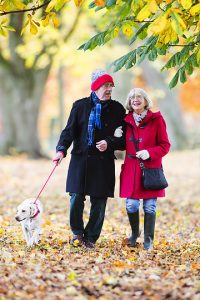The actual fear of falling increases the risk of falling
Research shows that if an older adult is fearful of falling they are three times more likely to fall than someone who is not. The fear causes the person to be more rigid/stiff with their movements, take small steps, grab for objects while walking, move more slowly, and become less active. All of those actions increase the risk of falling.
Natural movement is relaxed and fluid
Relaxed motions allow the body to more easily respond to changes. I compare this to a tree during a wind storm. Stiff/rigid oak trees are more likely to fall with gusts of wind than a willow tree. The willow tree allows the wind to pass through, but the oak tree is having to fight the wind to stay upright. When it can’t fight anymore it falls/breaks.
Taking small steps not only takes more energy and time to get to a destination, but it is more unsafe. Small steps usually coincide with shuffling feet. All of these traits increase the risk of falling. A large part of taking small steps and shuffling is due to weakness in the legs.
Walking slowly takes more strength/balance than walking at a normal pace
Your body needs to have more strength to control and stabilize your body when movements are slow. Some people use the opposite and walk too fast to compensate so they can use momentum rather than strength.

